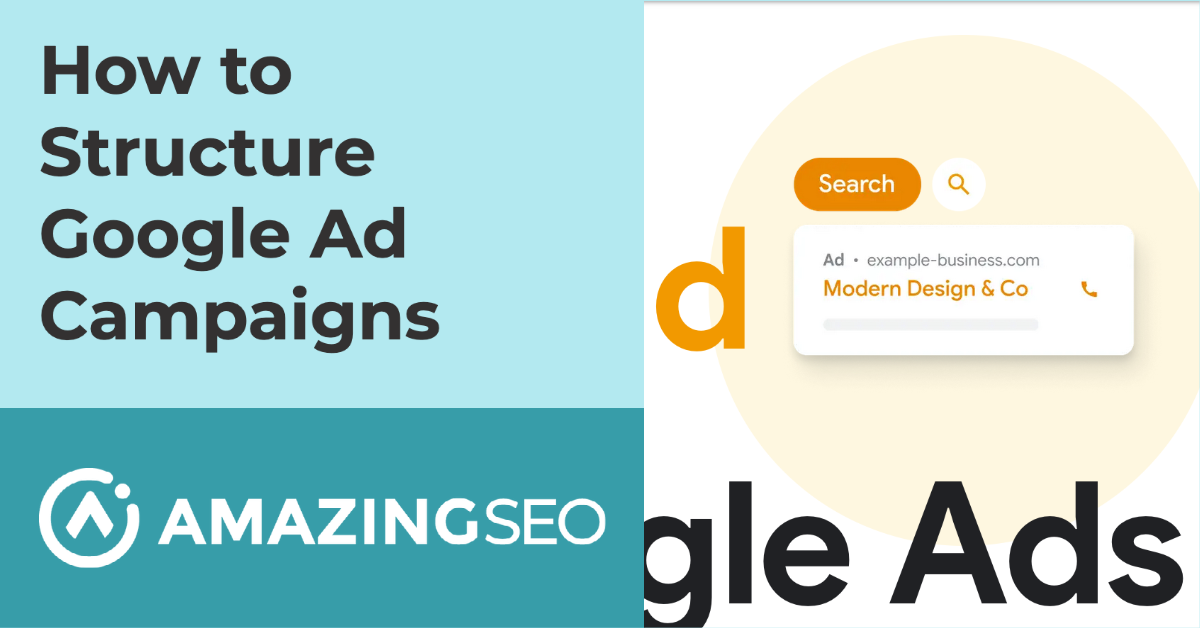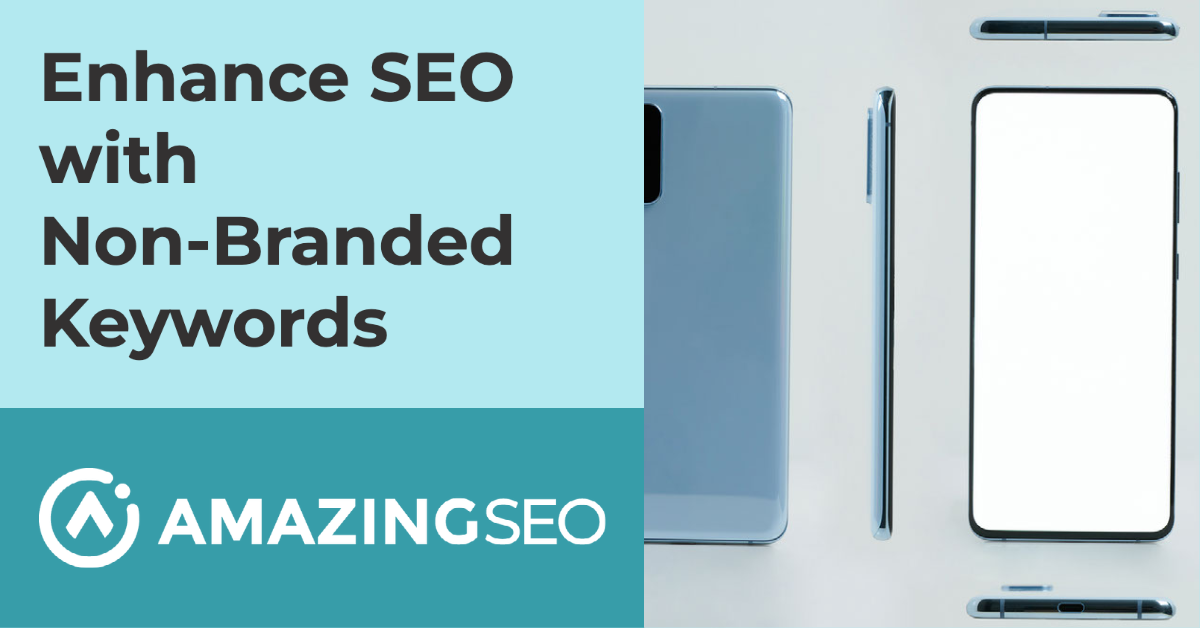How to Structure Google PPC Ad Campaigns
June 8, 2023

Google Ads are a highly effective and easy-to-use form of advertising that businesses of all sizes can take advantage of. With a 4.85% click-through rate (CTR), Google outperforms Facebook’s 1.32% CTR. Additionally, Google’s average cost-per-click (CPC) of $0.67 is significantly lower than LinkedIn’s $2.32 CPC.
Google Ads are diverse and offer various formats such as direct search ads, phone number campaigns, partner network ads, display ads, shopping ads, and more. For most businesses, a simple Google search ad generates the greatest return and is easy to set up.
To maximize your ROI, it’s crucial to set up your Google Ads correctly. Structuring your ads to be easy to track and organize from the backend is key, while ensuring that they look natural to search users on the front end. Here’s how to optimize your ad campaigns for success.
Naming Conventions
Managing a Single Brand
Before setting up your campaigns and ad groups in Google Ads, it’s essential to come up with a clear and concise naming convention. This will make it easier to organize and track your campaigns effectively. Here are two effective naming conventions to consider:
Method 1: Campaigns – Title by Product, Ad Groups – Title by Quality or Feature of the Product
Method 2: Campaigns – Site Category, Ad Groups – Products within that Category
Using either of these methods will allow you to easily organize your ads and track the performance of an entire category/product, as well as its specific features or copywriting. By analyzing this data, you can adjust your bids to optimize conversions and improve the overall performance of your campaigns. In the next section, we’ll go into more detail on how to structure your campaigns and ad groups for optimal performance.
When Managing Multiple Brands
If you’re running multiple businesses or subsidiaries, it’s important to include the business name somewhere in the campaign. This will make it easier to distinguish between campaigns and ensure that the data is properly tracked. For example, if you’re running campaigns for John’s Frozen Yogurt, Froyo Zone, and Mega Froyo, consider adding short title descriptors like (JFY), (FZ), and (MF). By doing so, you’ll be able to quickly identify the campaigns and keep track of the performance of each business. This can help you make more informed decisions about your ad-spend and optimize your campaigns for better results. Example: (JFY) Strawberry Soft Serve.
Campaign Structure
When planning an advertising campaign, it’s crucial to spend time thinking about its structure. The more structure you have, the more insights you can gain into what works and what doesn’t. With a well-structured campaign, you can analyze which products your audience is most interested in and how they respond to certain copywriting. If you discover certain strategies that are successful, you can apply them to other campaigns and ad groups with ease. By taking the time to plan and organize your campaign structure, you’ll be better equipped to make data-driven decisions and optimize your advertising for maximum results.
Method 1: (Products) (Feature)
Method 1 for structuring ad campaigns involves titling campaigns by product and ad groups by a quality or feature of that product.
For example, a car dealership might run a campaign for their lot inventory. They call the campaign “vehicles” and include ad groups for sedans, SUVs, minivans, and trucks.
This allows for easy tracking of each product’s performance and identification of the most resonant features. You can adjust bids or eliminate ad groups as needed.
Method 2: (Category) (Product)
In this method, you organize your campaigns and ad groups based on categories on your website or other materials. For instance, if you sell watches, your campaign titles could be “Dive Watches,” “Formal Watches,” “Aviation Watches,” “Field Watches,” etc. Your ad groups for dive watches could include brands, colors, styles, and so on, such as Rolex Submariner, Omega Sea Master, Oris Aquis, and more. The structure can vary depending on your preference, but the main objective on the back end is to refine your campaigns based on performance and gather meaningful data, while on the front end making it easier for prospects to find an exact product.
Keyword Types
Once you have set up the core structure for your campaigns and ad groups, you need to consider the keywords to target. It’s important to keep in mind that if you choose keywords that are too broad, Google may bid on irrelevant search queries, and you could end up wasting money. On the other hand, if you don’t select keywords that are specific enough, it may cost you a lot per click without getting the desired results. To strike the right balance, you need to use a mix of different keyword types, depending on how users are searching. The most common keyword types are:
Broad match: Broad Match keywords give Google the flexibility to bid on either the exact keyword or related keywords. For example, if you bid on “Men’s Watch,” Google may also bid on “Seiko 5 Watch.” However, this can be problematic if your landing page is for a different brand or price category than what the user was searching for. In our example, we do not sell Seiko watches and the typical Seiko buyer is in a different spending class than our typical clientele.
Exact Match: Exact Match refers to bidding for a specific keyword or phrase exactly as it is typed. With this type of keyword, Google will only show your ad if the search query matches the exact keyword or phrase you have chosen. This provides the most precise targeting, but it can also limit the reach of your ads.
Phrase Match: Phrase match is a keyword type where Google will attempt to closely match terms that you bid for depending on the entire phrase. The words you include in phrase match must be included in the inquiry but may or may not be the same order. In the previous version of phrase match, the order keywords were put in did matter. For example, “office chairs” could bid for “free office chairs” or “office chairs near me” but would not bid for “chairs office free”. This has changed and Google reserves more liberty than it used to.
Negative Keywords
Throughout the life of your campaign, it is important to continually build your list of negative keywords. This will allow you to bid much more specifically and avoid wasting money on irrelevant clicks. For example, if your business only sells Rolex, Omega, and Oris watches, you will want to add a broad negative for brands like Seiko, Timex, Tag Heuer, Breitling, etc.
You can research some negative keywords ahead of time that you know you won’t want to bid for. However, managing negative keywords is a process over the life of your campaign and as you see what keywords you are getting clicks for. The goal is for your ads to become targeted and profitable.
Set Bid Amounts
When setting up your campaign, you should choose an initial bid amount or an automated bidding strategy. However, as your campaign progresses, it’s important to monitor its performance and adjust as needed based on your conversion data. For instance, if your campaign is receiving fewer clicks than expected and is not showing up as often as your competitors’ campaigns, you may want to consider increasing your bid to improve visibility.
Location
When setting up your campaigns, it’s crucial to consider location targeting, particularly if you are a local or regional business. For instance, if you operate a watch shop catering to customers who prefer to research online and visit your store to try on watches, but your physical stores are only located in the Midwest United States, your ads should only be targeted to those specific states or cities where your stores are located. You can set your ad targeting to an entire state, a general city area, or even specific zip codes that are relevant to your business. In general, if location is critical to your business, the more granular your locations the better.
For national campaigns that target customers in all 50 states of the US, a useful technique is to add each individual state rather than setting your campaign to target the entire country. This way, you can track how individual states are performing and adjust your bids accordingly if you are underperforming or over performing in certain areas.
Conclusion
A well-structured campaign is essential for obtaining meaningful data and achieving profitable results. It should be granular and provide ample opportunities for precise adjustments. As your campaigns are ongoing projects, you should continuously adjust them based on their performance over time. This involves tweaking bids, adding negative keywords, and experimenting with ad copy. With time, a well-managed campaign selling a relevant product should become increasingly profitable.
If you are interested in working with us to establish an amazing ad campaign, feel free to send us a message to discuss further.
Recent Blog Posts
Will Outbound Links Help Your SEO?
There's a common belief that including links to well-known websites like CNN or Wikipedia can boost your web pages' search algorithm ranking. However, the reality is that these links won't significantly improve your SEO. While [...]
Why Its Essential to Create Conversion Tags for Google Ads
Google advertising plays a crucial role for many businesses by acting as a digital billboard. When users search for a product or service, your ad has the opportunity to appear at the top of the [...]
Pinterest SEO Guide: How to Stand Out on This Platform Shoppers Love
Pinterest has become a popular social media platform for brands to connect with influencers and consumers. This image-focused site allows users to discover and save images from the internet onto boards, making it ideal for [...]
How to Structure Google PPC Ad Campaigns
Google Ads are a highly effective and easy-to-use form of advertising that businesses of all sizes can take advantage of. With a 4.85% click-through rate (CTR), Google outperforms Facebook's 1.32% CTR. Additionally, Google's average cost-per-click [...]
Why Focus on SEO During a Recession
Businesses of all sizes are feeling the pinch as we enter into a recession. Budgets are being slashed, and marketing is often one of the first areas to be cut. But while it may be [...]
How to Use non-branded keywords for SEO
While it can often seem like branded keywords, “Nike shoes”, “Apple computer”, “Samsung phone” “Nestle hot chocolate” dominate the internet, these branded keywords aren’t the only terms users search for. In fact, many consumers are [...]




